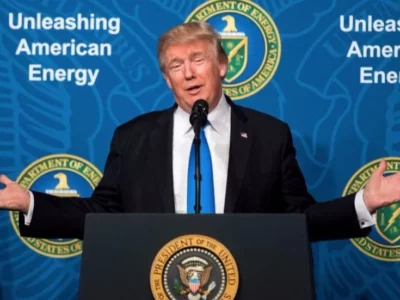Executive Branch Agreement on Mountaintop Removal: A Positive Step, but Only a Step
Cross-posted with permission from CPRBlog.
Over the past few months, the Obama Administration has sent mixed signals on mountaintop mining, the practice of blowing the tops off mountains containing coal and piling the left-over rubble in valleys and streambeds. Early on, things seemed to be going well for the environment. First, EPA objected to the issuance of two specific permits for mountaintop removal under Clean Water Act section 404, and announced that it would review hundreds of others. Then the Department of Interior asked a court to remand a Bush-era rule that made it easier for coal companies to dump their mountaintop waste in valley streams. But then, to the consternation of the environmental community, EPA announced that after review it would allow 42 of 48 pending permits in one Corps of Engineers district to go ahead, objecting to only six.
Now the Administration has announced an interagency agreement on a coordinated policy intended, according to Nancy Sutley, who chairs the White House Council on Environmental Quality (CEQ), to end confusion. In one sense, it does that. The agreement does show that CEQ (which seems to be running this show) has gotten the three federal agencies that share oversight authority for mountaintop removal – EPA, the Corps, and Interior – on the same page. But because there is very little substance to the agreement, exactly what it means for future policy is about as clear as a stream full of mining debris. The agreement certainly contains some promising elements, but the extent to which it translates to increased environmental protection will depend on how the sketchy details are filled in.
What may be clearest about the agreement is the mixed motives behind it. The Administration is trying to placate both environmental and local economic interests. That requires a tightrope walk, since although the agreement promises vaguely to “stimulat[e] clean enterprise and green jobs development,” that’s neither a quick nor an easy task. In the meantime, political pressures may well be contributing to the decision to allow the vast majority of the reviewed projects to go ahead. The lack of any public explanation so far of why those projects are acceptable can’t help but feed speculation that raw politics is a key factor.
Essentially, the document released today is a promise by the three agencies to review and reconsider the ways they regulate mountaintop removal. The Corps will consider excluding mountaintop removal in Appalachia from its controversial “Nationwide Permit 21,” which allows permits to be granted with minimal Corps or public review. EPA will take another look at the application of Clean Water Act section 402, which regulates industrial waste outfalls, and help states make more effective use of their water quality certification authority. Interior’s Office of Surface Mining will re-evaluate its oversight of state permitting and regulatory activities.
Finally, EPA, the Corps, and the Fish and Wildlife Service together will jointly issue guidance clarifying how impacts to streams and proposed mitigation measures should be evaluated. That guidance will be crucial, since case-by-case review will be the rule for the foreseeable future, and there are strong signals that for most mountaintop proposals the outcome will be business as usual. Sutley told the Washington Post that she expected regulators to apply standards similar to those that recently produced the decision to allow the vast majority of pending proposals to go ahead.
So written guidance explaining the ecological basis for distinguishing among valley fill proposals, and allowing many to go ahead, will be essential if the Administration wants its program to have environmental credibility. The agreement promises that guidance by the end of this year. Drafting it will not be easy, so the agencies will need to get started right away. One important element in developing the guidance that today’s announcement didn’t address is opportunities for public comment. This administration understands the importance of transparency, and should strive for it here. Given the short timeline, the agencies should solicit comments right away, while they prepare a draft, and then provide for a second round of commenting on that draft. Too much is at stake, both for the rivers and forests of coal country and for the administration’s relationship with the environmental community, to take shortcuts with this one.
Reader Comments
3 Replies to “Executive Branch Agreement on Mountaintop Removal: A Positive Step, but Only a Step”
Comments are closed.






very helpful/interesting website. One error in this post: CEQ Chair is Nancy Sutley (former deputy mayor of LA).
Andrew, thanks for catching that. I’ve corrected the post.
One of the problems with regulating mountain top mining is the restrictions on Clean Water Act jurisdiction imposed by the US Supreme Court in its Rapanos decision in 2006.
Under Rapanos, intermittent and ephemeral streams are no longer subject to CWA jurisdiction. Many of the streams impacted by mountain top mining are intermittent and ephemeral, and discharges of fill material to such streams do not require a permit from the Corps.
In addition to mountain top mining, numerous development projects that were previously regulated no longer require a Corps’ permit because of Rapanos.